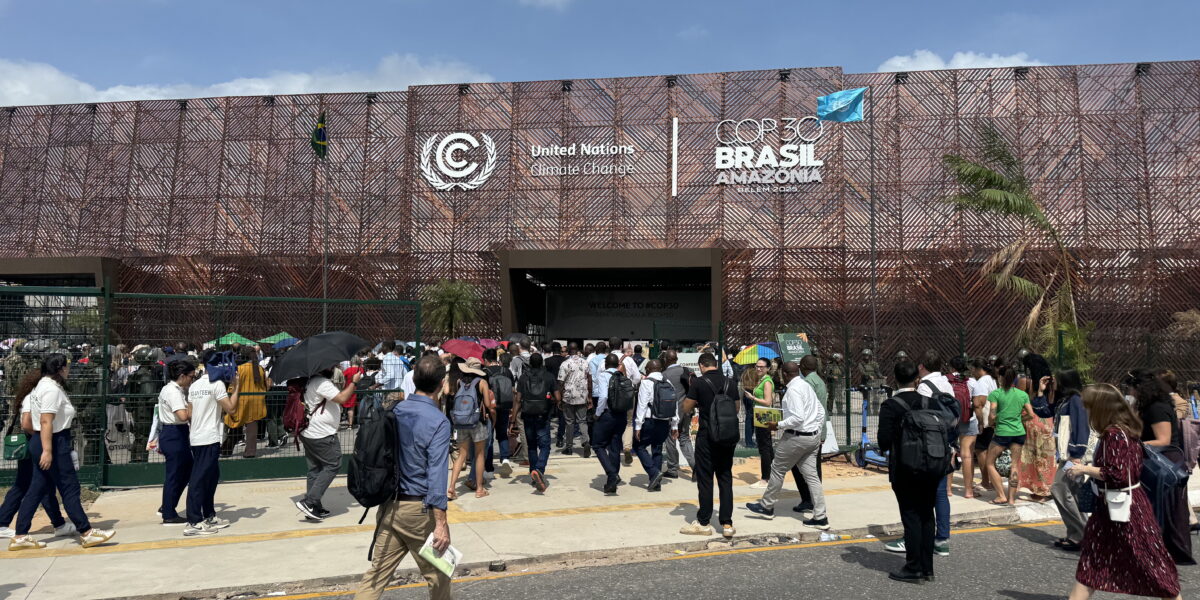As the 30th Conference of the Parties to the United Nations Framework Convention on Climate Change concludes in Belém, Brazil, the ocean community has reason for both cautious optimism and continued vigilance. Held in the heart of the Amazon—a powerful symbol of Earth’s interconnected climate systems—COP30 brought renewed attention to the critical role the one global ocean plays in addressing the climate crisis. But did this “Amazon COP” deliver meaningful progress for our blue planet, or merely repackage familiar promises?
Ocean Finally Takes Center Stage
For the first time in UN climate negotiations, the ocean received substantial recognition as central to climate solutions, not merely a victim of climate change. Brazil’s COP30 presidency explicitly framed the ocean and forests as the planet’s twin priorities, signaling climate change as a multi-sectoral and primarily systemic issue. This represents a significant shift from decades of compartmentalized thinking that prioritized terrestrial ecosystems while largely ignoring marine systems.
The ocean community achieved several concrete advances:
Blue NDCs Gain Momentum: Six new countries joined the Blue NDC Challenge to champion ocean-climate action in Nationally Determined Contributions, bringing total Ocean Panel membership in the Challenge to 13 countries. More significantly, participating nations expressed their intention to transition into a “Blue NDC Taskforce” to drive implementation of ocean commitments through political leadership, technical expertise, and investment mobilization.
Ocean Breakthroughs Framework: The COP30 presidency, working with Climate Champions and the Ocean Climate Platform, advanced a Blue Package roadmap to accelerate implementation of ocean-climate solutions by 2028. This initiative establishes science-based targets across five key areas addressing marine conservation, maritime transport, and coastal resilience.
2025 Ocean Dialogue Outcomes: The ocean and climate change dialogue held during SB62 produced key recommendations on NDCs, Global Goal on Adaptation indicators, strengthening coordination, and finance. Small Island Developing States, represented by AOSIS, emphasized that these recommendations must be embedded across all agenda items rather than siloed as separate discussions.
The Finance Challenge Persists
Despite growing recognition of ocean-based solutions, financial commitments remain inadequate. SDG 14, the ocean goal, receives only 0.01 percent of all development funding. While the $1.3 trillion Baku-to-Belém Roadmap calls for mobilizing annual climate finance by 2035, the ocean is not specified as a priority sector within this framework.
This represents a fundamental disconnect: we acknowledge that the ocean absorbs over 90 percent of excess heat from human activity and produces half the planet’s oxygen, yet we refuse to adequately fund its protection and restoration. The ocean has shielded humanity from the worst impacts of climate change, but this comes at a tremendous cost to marine ecosystems and the communities that depend on them.
High Seas Governance Advances
A concrete achievement at COP30 was Brazil’s commitment to ratify the High Seas Treaty (BBNJ Agreement) by year’s end. The High Seas Treaty establishes the legal architecture for establishing Marine Protected Areas in international waters, finally bringing governance to the global commons, where two-thirds of the world’s ocean currently lacks it. This matters enormously for The Ocean Foundation’s work on ocean science equity and conservation partnerships, as effective governance of the high seas requires international scientific cooperation and equitable access to marine resources.
Forests and Ocean: Connected Systems
COP30’s emphasis on tropical forests through the Tropical Forests Forever Facility offers essential lessons for ocean finance. The facility will reward countries that succeed in halting deforestation, aiming to channel up to $4 billion annually to as many as 74 nations by paying $4 per hectare per year for verified forest conservation. Investor governments are expected to contribute $25 billion over the coming years, leveraging more than $100 billion from private sources.
Could a similar mechanism work for ocean conservation? Blue carbon ecosystems—mangroves, seagrasses, and salt marshes—provide carbon sequestration services equivalent to or greater than those of terrestrial forests while simultaneously supporting coastal resilience, biodiversity, and fisheries. The ocean absorbs roughly 25 percent of anthropogenic carbon dioxide emissions annually. Yet we lack a comparable global payment mechanism for countries that maintain healthy marine ecosystems.
The Tropical Forests Forever Facility’s emphasis on Indigenous peoples and local communities—with 20 percent of funding designated for Indigenous groups—should be mirrored in ocean governance. Coastal and island communities, particularly in Small Island Developing States, have been stewards of marine ecosystems for generations while contributing minimally to global emissions.
What Got Done—and What Didn’t
Despite ocean progress, COP30’s draft agreement sparked fierce controversy. An early Friday draft unveiled by Brazil contained no mention of fossil fuels, the world’s largest contributor to global warming, marking a significant break from previous iterations. The European Union threatened to block the deal, with climate chief Wopke Hoekstra stating the text contained “no science, no global stocktake, no transitioning away, but instead weakness.”
For the ocean community, this matters profoundly. Ocean acidification, warming, and deoxygenation are direct consequences of fossil fuel emissions. Any climate agreement that fails to address the root cause of ocean degradation cannot claim to protect marine ecosystems.
The draft agreement also included weakened language on tackling deforestation—ironic for a conference held in the Amazon—and failed to specify whether the tripled climate financing would come from wealthy nations or be outsourced to private-sector mechanisms that may not prioritize ecosystem restoration.
Looking Forward: From Recognition to Action
The ocean community succeeded in elevating marine ecosystems within UNFCCC processes, but visibility alone does not translate to implementation.
Key priorities emerge: First, we need dedicated ocean climate finance mechanisms comparable to forest protection funds, recognizing the ocean’s climate mitigation and adaptation value. Second, ocean-based solutions must be integrated throughout NDC mitigation and adaptation strategies as countries submit updated plans in 2025. Third, strengthening coordination among the CBD, UNFCCC, the BBNJ Agreement, and the International Seabed Authority is essential—we cannot afford institutional fragmentation when addressing interconnected crises. Finally, ocean climate finance must center coastal and island communities who depend on marine resources while contributing least to climate change, just as the Tropical Forests Forever Facility prioritizes Indigenous peoples.
The Path from Belém
COP30 marked substantial progress for the ocean, but we cannot mistake visibility for victory. The ocean has been humanity’s buffer against climate catastrophe. Now it’s our turn to buffer the ocean from further harm. COP30 provided tools and frameworks—implementation is what matters next.





